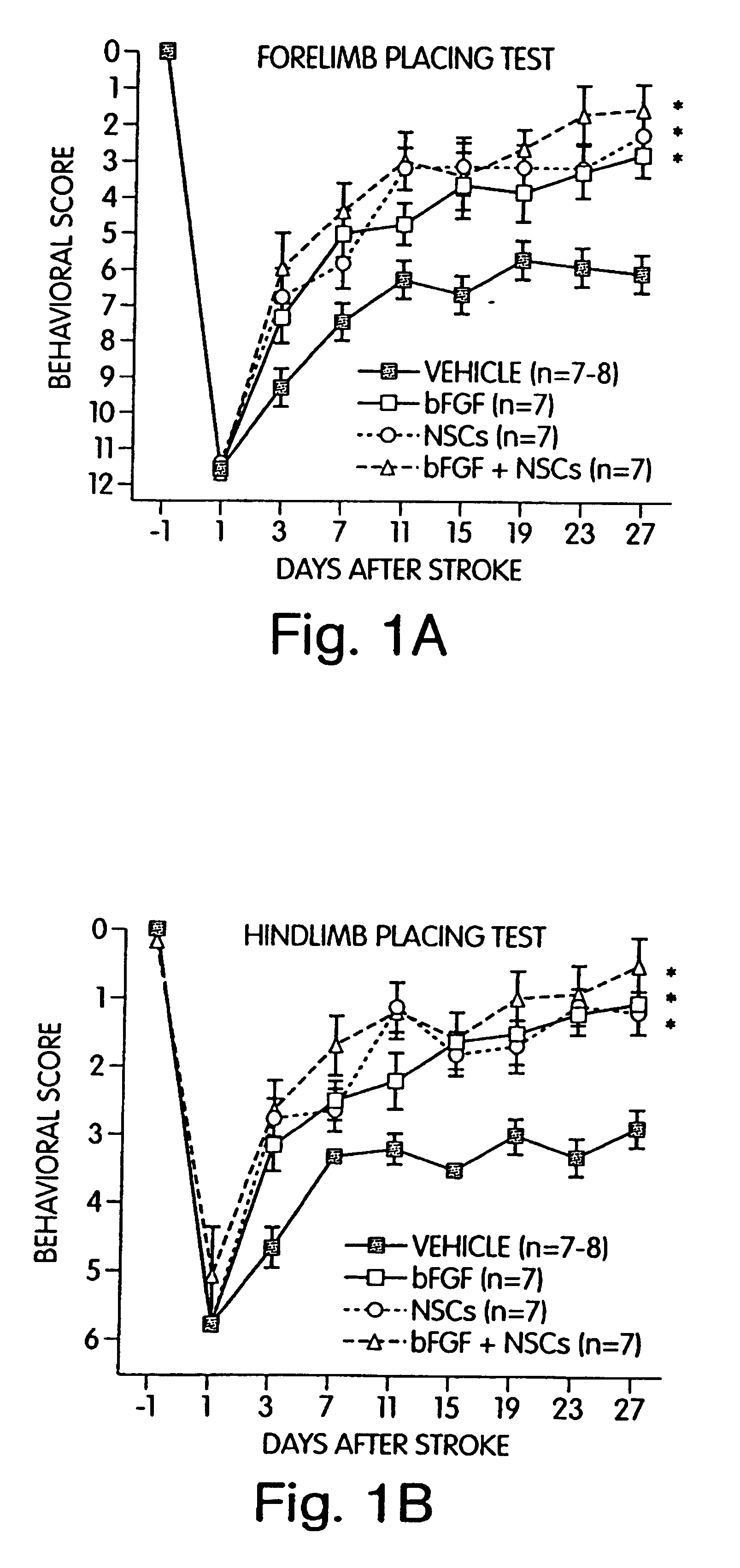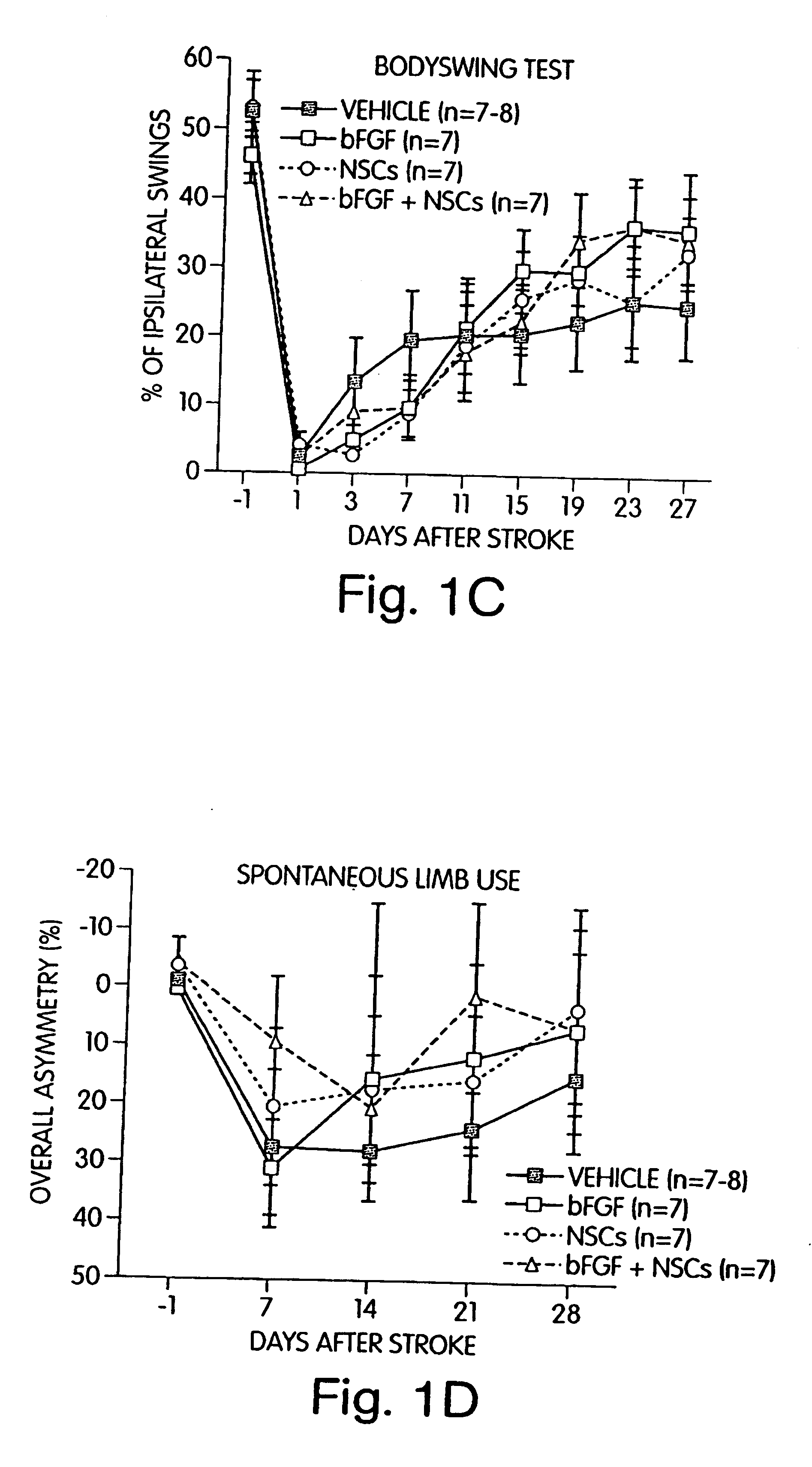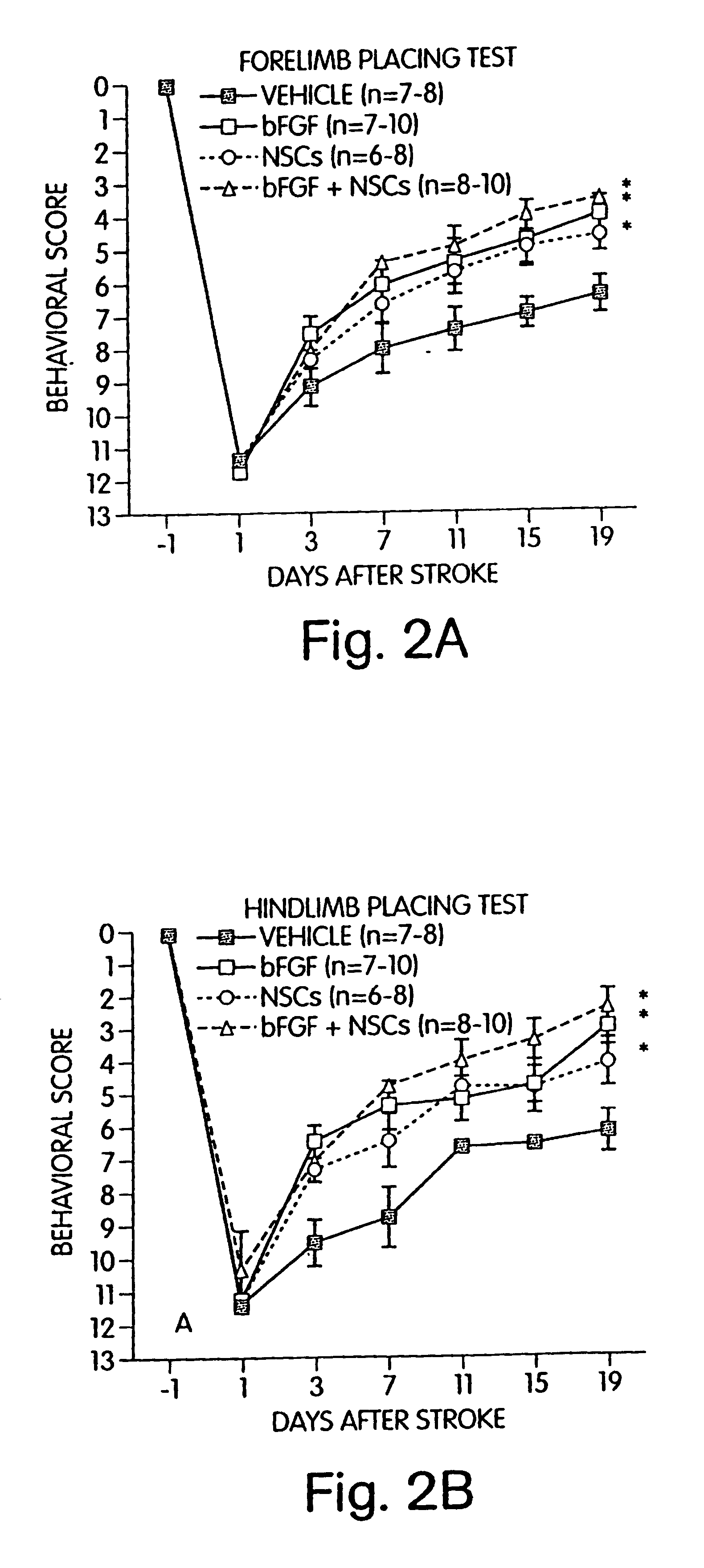Methods, compositions and kits for promoting recovery from damage to the central nervous system
a technology of central nervous system and recovery, applied in the field of central nervous system recovery, can solve the problems of debilitating and largely irreversible degradation of patient's cognitive and sensorimotor functions, nerve system damage, cell death or damage, etc., to improve the subject's sensorimotor or cognitive abilities, improve the subject's limb movement and control, and improve the effect of recovery
- Summary
- Abstract
- Description
- Claims
- Application Information
AI Technical Summary
Benefits of technology
Problems solved by technology
Method used
Image
Examples
example 1
Intracisternal Neural Stem Cells (NSC) and Growth Factors Enhance Stroke Recovery
In this example, fetal mouse neural stem cells (NSC) with or without basic fibroblast growth factor (bFGF) were administered intracisternally in a model of stroke recovery in rats. Male Sprague-Dawley rats, 300-350 grams, were handled for one week before surgery. They received an antibiotic, cefazolin sodium (40 mg / kg, i.p.), one day before stroke surgery. On the day of stroke surgery, animals were anesthetized by 2% halothane in a nitric oxide / oxygen mixture (2:1). Focal cerebral infarction, (stroke) was performed by proximal electrocoagulation of the middle cerebral artery, as described previously (Kawamata et al. (1999) Exp. Neurol. 158, 89-96; Tamura et al. (1981) J. Cereb. Blood Flow Metab. 1, 53-60). Specifically, the artery was occluded from just proximal to the olfactory tract to the inferior cerebral vein, without removing the zygomatic arch or transsection of the facial nerve. This technique p...
example 2
Direct Intracerebral Administration of NSC and Intracisternal Administration of bFGF Enhance Recovery in Rat Stroke Model
In a second experiment, NSC were injected directly into the brain into tissue surrounding focal strokes. bFGF was injected intracisternally, as before. In this experiment only one administration of NSC or bFGF was performed at one day after stroke. Under these conditions, we clearly observed the superiority of NSC+bFGF compared to either treatment alone.
In this experiment, animals were handled for one week before surgery. In addition, they were trained on an additional test, the paw reaching test (see below) for 10 days before surgery. As before, they received cefazolin sodium (40 mg / kg, i.p.) before surgery. On the day of surgery, electrocoagulation of the proximal middle cerebral artery was done, as described previously (Kawamata et al. (1996) J. Cereb. Blood Flow Metab. 16, 542-547; Kawamata et al. (1997) Proc. Nat. Acad Sci. 94, 8179-8184; Kawamata et al. (199...
PUM
| Property | Measurement | Unit |
|---|---|---|
| Time | aaaaa | aaaaa |
| Weight | aaaaa | aaaaa |
| Weight | aaaaa | aaaaa |
Abstract
Description
Claims
Application Information
 Login to View More
Login to View More - R&D
- Intellectual Property
- Life Sciences
- Materials
- Tech Scout
- Unparalleled Data Quality
- Higher Quality Content
- 60% Fewer Hallucinations
Browse by: Latest US Patents, China's latest patents, Technical Efficacy Thesaurus, Application Domain, Technology Topic, Popular Technical Reports.
© 2025 PatSnap. All rights reserved.Legal|Privacy policy|Modern Slavery Act Transparency Statement|Sitemap|About US| Contact US: help@patsnap.com



